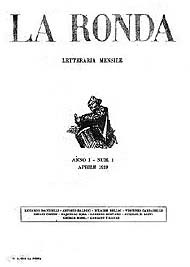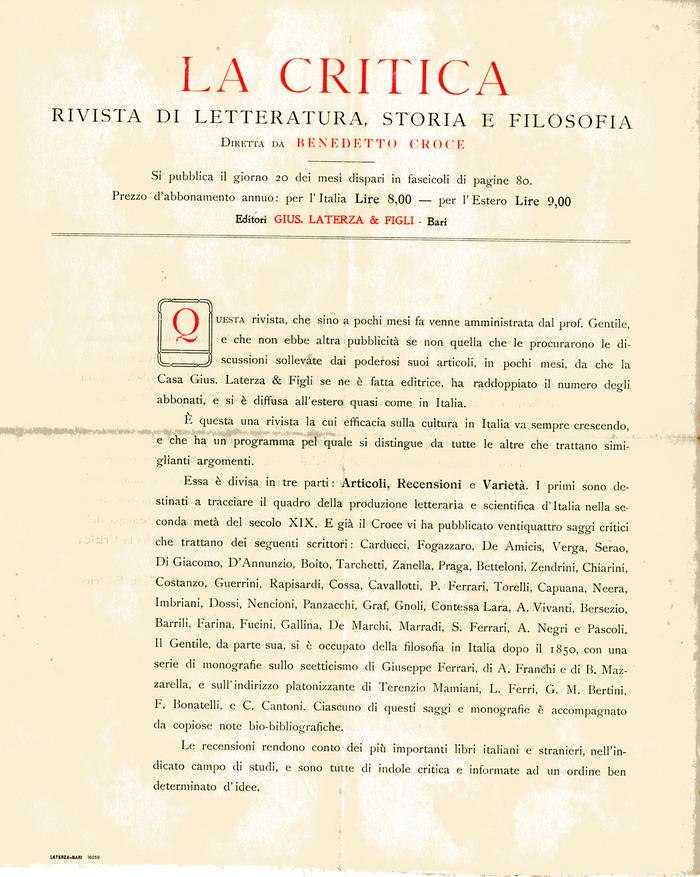Italy in Magazines:
Voices and Echoes of the Twentieth Century
Starting from the Enlightenment, periodical publications have played a decisive role in the development of European culture, giving rise to a phenomenon that has reached such proportions and importance that the 20th century has been called the "century of magazines".
In the early decades of the twentieth century, literary magazines reflected the spirit of an era, one in which the figure of the young intellectual, engaged and militant, who believed they could put their culture and art at the service of the country, spread across Italy. Concurrently with the crisis of positivism and the rise of new idealism, magazines became the medium for intervening in the present and accelerating the movement of the world, overlaying it with the needs for individual "vitality," and the aspiration for intense ideal and spiritual values.
The culture of the new generations (roughly those born from 1880 onwards) appeared dominated by a strong critical tension that looked at the present, aiming to transform and overturn its characteristics. Criticism and essays came to the fore, seeking to measure themselves against the situation, opportunities, and trends of the present: a form of criticism that often did not settle for well-defined and limited objects, but aimed to suggest ideal perspectives and choices, ranging between ideology, politics, and philosophy, giving voice to the most complex dilemmas of the conscience.
Ideology, criticism, and politics became closely intertwined: and the same reflection on literature became part of an intellectual battle in which ideas, forms, and projects seemed to move in a crowded and turbulent scene, with the actors being recognized by their roles filled with ideal strength, and by the tension that always animated their insights.
In the twentieth century, several cultural hubs became focal points for intellectual experiences.
However, the distribution of magazine centers shows a discrepancy across the peninsula.
In the early decades of the twentieth century, 80% of Italians were illiterate. Only 2% read periodicals daily. Those who wrote and read were educated Italians, wealthier than the average. The country’s elite was therefore concentrated in the North.
Click on the map to view the magazines
In the first thirty years of the century, alongside Milan, Florence stood out as an important cultural hub, open in various directions. From the experience of Voce, continuing with internal opposition to fascism, realist literature, and engagement with European experiences.

Rome, too, was another major center of cultural life. It’s essential to mention La Ronda, an expression of a desire for literary and ideological order.

Though fewer in number, Southern Italian experiences also had a cultural impact, notably through the teachings of Benedetto Croce and intellectual antifascism.
